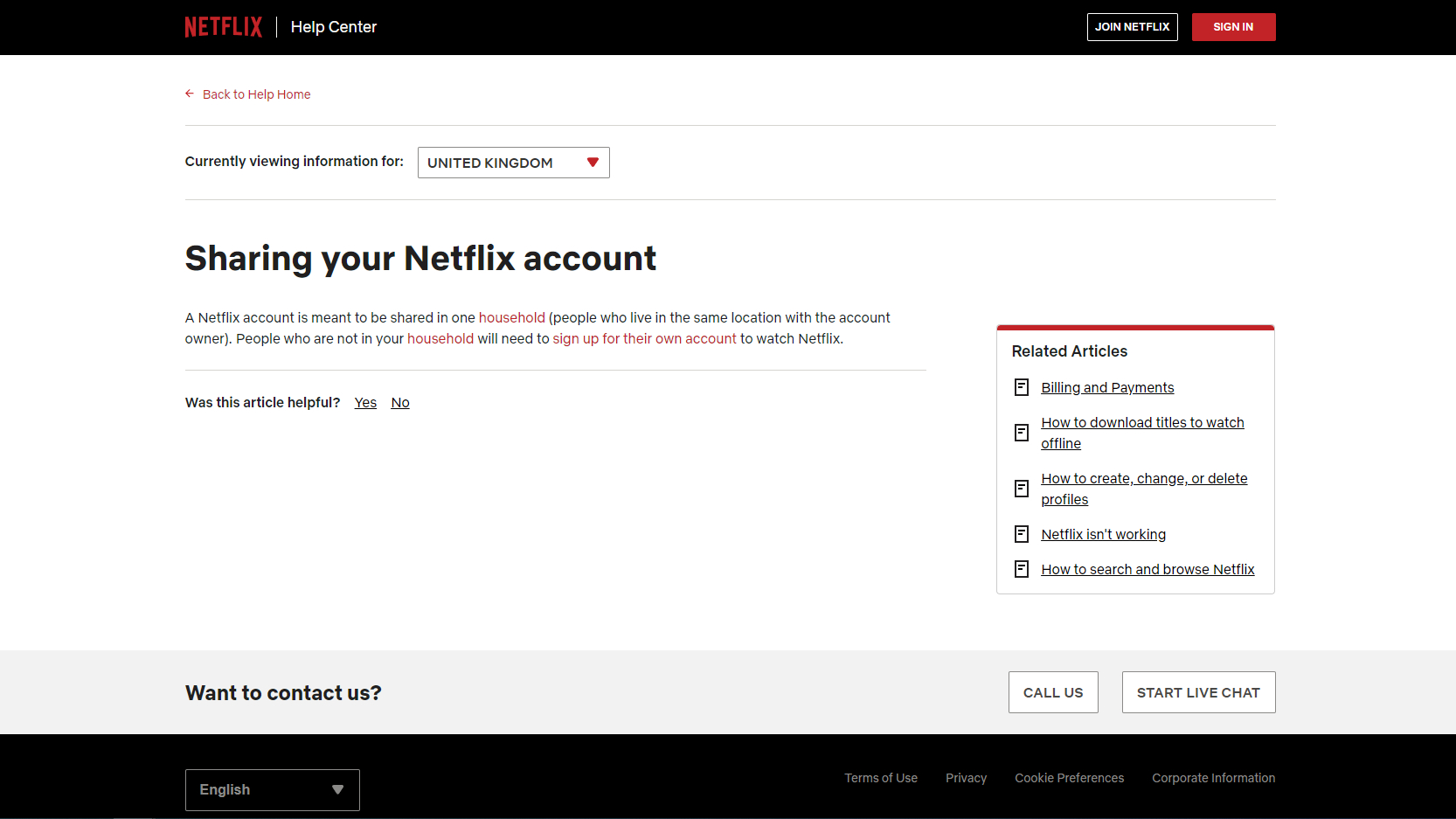Netflix password-sharing is looking more expensive than we realized

The new Netflix password-sharing limits have started rolling out in new regions, with New Zealand, Spain, Portugal, and Canada being the latest to face the new restrictions. Plus, it’s quietly hidden its rules in other countries.
The streaming giant has announced that its long-awaited (and much-hated) password-sharing rules are rolling out in countries outside of its South American testing grounds. Now, account holders in Canada, New Zealand, Spain, and Portugal will be asked to set a primary location for their household – and anyone not living at this location will find their access restricted, unless they pay up that is.
You see, Netflix will actually let you keep sharing your account with people you don’t live with - it just won’t be free. Based on currency conversion rates for its South American tests we thought the fee would be very reasonable at around $2.99 / £2.50 / AU$4 (significantly cheaper than Netflix’s most expensive $19.99 / £15.99 / AU$22.99 4K plan).
Unfortunately, the prices don’t seem to be quite as cheap as expected, with extra member costs being set at CA$7.99 a month in Canada, NZ$7.99 a month in New Zealand, €3.99 a month in Portugal, and €5.99 a month in Spain. Given these figures it seems more likely we’ll see the extra member cost be $7.99 / £7.99 / AU$7.99 in the US, UK, and Australia. This is still cheaper than the more premium subscription tiers, just not as good a deal as we had hoped.
Extra member fees are only available for Standard and Premium accounts, and paying them will allow you to add a sub-account that can support an additional user living at a different address to the main household. This sub-account will have its own profiles, recommendations, and login details. Standard accounts can have one sub-account, while Premium accounts can have two sub-accounts.
Thankfully for all you password sharers outside of these regions, you can keep splitting your Netflix account for free for a little longer, but you should see this latest announcement as the beginning of the end. We expect it won’t be long until every Netflix subscriber is subject to the same confusing rules as Canada, Spain, and the others; so make sure to finish binging that best Netflix show on your parent/friend/distant relative’s account while you can.
No more rules?
Speaking of confusing rules. Following Netflix’s recent debacle where it briefly outlined its new rules in an official FAQ, changed them, then reversed its changes almost immediately, the streamer has seemingly decided to hide the rules entirely.
Sign up for breaking news, reviews, opinion, top tech deals, and more.
If you visit the FAQ today you won't see any mention of having to visit the account’s main location once a month to maintain access, nor anything about needing to verify the account using a phone or email password. Instead, users in the US, UK, Australia, and others will be greeted by a short statement:
“A Netflix account is meant to be shared in one household (people who live in the same location as the account owner). People who are not in your household will need to sign up for their own account to watch Netflix.”

Those of you in Canada and the other countries with extra member rules will also see details about adding extra members, but that’s it.
For now, it appears Netflix is trying to keep its account-sharing FAQ more simple and straightforward but in the process, it has made its rules more difficult to understand as no one knows exactly how the new system works and verifies who is and isn't in a Household. Though hiding its explanation for how Households work could be an effort to prevent people from finding a way to circumvent the new restrictions.
If you’ve decided - understandably - that your time with Netflix is coming to an end, check out our picks for the best streaming services to see if there’s an alternative that floats your boat.
Correction: February 9, 2023
An earlier version of this piece stated that one sub-account could support two users, unfortunately, one sub-account can only support one user.

Hamish is a Senior Staff Writer for TechRadar and you’ll see his name appearing on articles across nearly every topic on the site from smart home deals to speaker reviews to graphics card news and everything in between. He uses his broad range of knowledge to help explain the latest gadgets and if they’re a must-buy or a fad fueled by hype. Though his specialty is writing about everything going on in the world of virtual reality and augmented reality.
